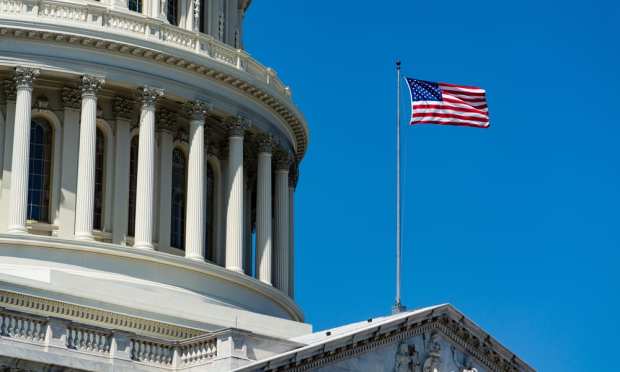Mnuchin, Powell Tell Congress U.S. Economy Could Use More Stimulus

Federal Reserve Chair Jerome Powell and U.S. Treasury Secretary Steven Mnuchin told a House committee Tuesday (Sept. 22) that marked economic progress has been made since the depths of the pandemic in March. But they said there’s more work to be done, especially in addressing small-business lending and extending more stimulus through direct payments to individuals and families.
“Economic re-openings combined with [U.S. government stimulus] have enabled a remarkable economic rebound, but some industries particularly hard hit by the pandemic require additional relief,” Mnuchin said in prepared remarks before the House Financial Services Committee.
He added that the economy needs “targeted” additional stimulus for individuals and that the Trump administration supports stimulus payments that would be done directly.
As for the gains already in evidence, Powell said U.S. household spending has recovered about three quarters of its previous slide — a rebound at least partly spurred by $1,200 stimulus payments to individuals and increases in unemployment benefits. About half of the 22 million jobs lost during the pandemic have returned, Powell said.
“Both employment and overall economic activity, however, remain well below their pre-pandemic levels, and the path ahead continues to be highly uncertain,” he said. “The downturn has not fallen equally on all Americans. Those least able to bear the burden have been the most affected.”
But with a nod toward the Fed’s Main Street Lending Program and other emergency measures, Powell said 13 lending facilities have helped unlock $1 trillion of business funding.
“Many of the businesses affected by the pandemic are smaller firms that rely on banks for loans, rather than public credit markets,” he said. “[The Main Street program] is designed to facilitate the flow of credit to small and medium-sized businesses. Thus far, $2 billion has been extended or is in the pipeline across 230 loans.”
Powell said the Main Street program “is intended for businesses that were on a sound footing pre-pandemic and that have good longer-term prospects, but which have encountered temporary cash flow problems due to the pandemic and are not able to get credit on reasonable terms as a result. Main Street loans may not be the right solution for some [companies].”
Rep. Maxine Waters (D-Calif.), the House committee’s chair, noted that only about $1.2 billion of the $600 billion in the Main Street facility has “gone out the door” to some 118 companies even though the program’s loan minimums had been lowered to $250,000 from a previous $1 million.
Mnuchin said that he “would be fine” lowering that amount to $100,000 and would consult with Powell about doing so.
But Powell later testified that there “is little demand in the facility below $1 million,” and added that “this would have to be a different facility. It would not look like Main Street. Extending credit in those small quantities would require a facility built from the ground that would be quite different than Main Street … We can talk about that.”
But he added that “trying to underwrite the credit for hundreds of thousands” of smaller firms would be difficult.
In questioning about the Paycheck Protection Program, Rep. Ted Budd (R-N.C.) noted that less than 2 percent of PPP loans have been processed through the Small Business Administration’s portal. Budd added that many smaller borrowers are looking for loan forgiveness through bipartisan efforts.
The North Carolina Republican also said his office has heard from companies unable to secure short-term financing but too large to qualify for PPP. Asked if there’s a “gap” between the PPP and Main Street programs, Powell said the Fed has been “looking for gaps,” but that the bank didn’t see a “big problem to solve there.”
However, Powell added that there will be further examination of the issue. “A full recovery is likely to come only when people are confident that it is safe to re-engage in a broad range of activities,” he said.